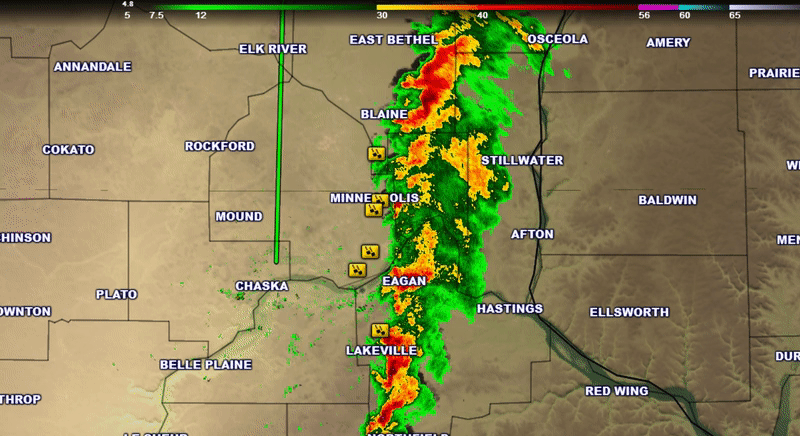

- Weather radar in motion archive#
- Weather radar in motion full#
- Weather radar in motion verification#
- Weather radar in motion Offline#
- Weather radar in motion series#
Scientists use these products to detect precipitation, evaluate storm structure, locate boundaries, and determine hail potential. Product Descriptionsīase Reflectivity (N0R, N1R, N2R, N3R/19 and N0Z/20)Ī display of echo intensity measured in decibels relative to Z (dBZ). Each copy includes state, county, and city background maps. Most 元 products are available as digital images, color hard copy, grayscale hard copy, or acetate overlay copy.
:quality(85)/cloudfront-us-east-1.images.arcpublishing.com/gray/3NWZQIXFQ5HRLOUG6XJFOT5I4I.jpg)
Over 75 Level-III (元) products are routinely available from NCEI. A data file consists of a 24-byte volume scan header record followed by numerous 2,432-byte base data and message records. Data are stored in files that typically contain four, five, six, or ten minutes of base data depending on the volume coverage pattern. Additional categories include dual-polarization base data of differential reflectivity, correlation coefficient, and differential phase. Level-II (L2) data are grouped into three meteorological base quantities: reflectivity, mean radial velocity, and spectrum width.
Weather radar in motion Offline#
Request Offline Data NEXRAD Level-II (Base) Data This dataset is not currently available for direct download from NCEI, but is available by request from the offline archive.

An inventory of events is available here. An event summary file with descriptive information is included for each case study.
Weather radar in motion archive#
The data files have been aggregated by event and by hour for the archive with a total data volume of approximately 20 TB.
Weather radar in motion series#
The data files are in the native compressed file format as Time Series (TS) Archive. The number of case studies per year ranges from 1 to 33, with an average of approximately 10 per year.

The period of record is from 2008 to present with additional data years planned. NEXRAD operational sites and test sites are used.
Weather radar in motion verification#
It includes only the Level 1 data that has been used for algorithm development and verification by the ROC and its partners. This dataset contains the Level-I (L1) raw radar event data recorded at Next Generation Radar (NEXRAD) sites and collected by the NOAA National Weather Service (NWS) Radar Operations Center (ROC) for specific radar case studies. Online Store Data Types Level-I Event Data Soc., Boston, 1978).The online store provides access documentation, paper copies of data, and other related products. 76–2 (Alberta Research Council, 1976).īrowning, K. Here we describe an objective use of radar reflectivity factor data from a single conventional weather radar to give information related to the three-dimensional motions within a storm.īrowning, K. Pattern recognition schemes using correlation coefficient techniques 6, Fourier analysis 7, and gaussian curve fitting 8 have been used with radar and satellite data, but primarily for detecting overall storm motions, echo merging and echo splitting. Because of the inherent advantage of Doppler radar in motion detection, little effort has been directed toward developing objective schemes of determining internal storm motions with conventional meteorological radars.
Weather radar in motion full#
Two 4 or three 5 Doppler radars collecting data in conjunction, the equation of mass continuity, and an empirical radar reflectivity–terminal velocity relationship have enabled the estimation of the full three-dimensional airflow fields in parts of storms. Doppler radar added a new dimension to our capabilities through its ability to measure directly the radial component of motion of an ensemble of hydrometeor particles. Both Barge and Bergwall 2 and Browning and Foote 3 have used fine scale reflectivity structure to determine airflow in hailstorms. Such approaches have continued by using the increasingly finer scale details provided by more modern radar systems. Early users of radar gave total storm movement only, whereas later radar data were used to reveal internal motions based on information related to cloud physics such as the three-dimensional morphology of the storm volume. Radar has long provided information on the three-dimensional structure of storms from measurements of the radar reflectivity factor alone. KNOWLEDGE of the kinematic structure of storms is important for understanding the internal physical processes.


 0 kommentar(er)
0 kommentar(er)
